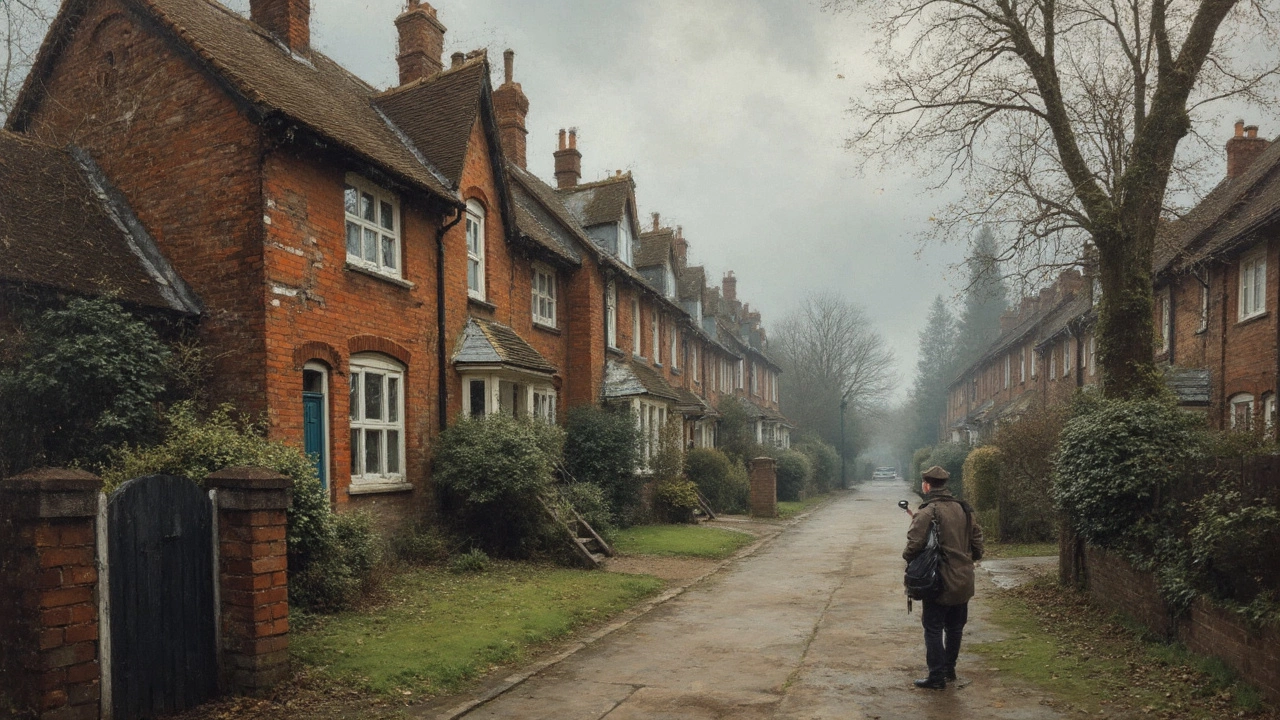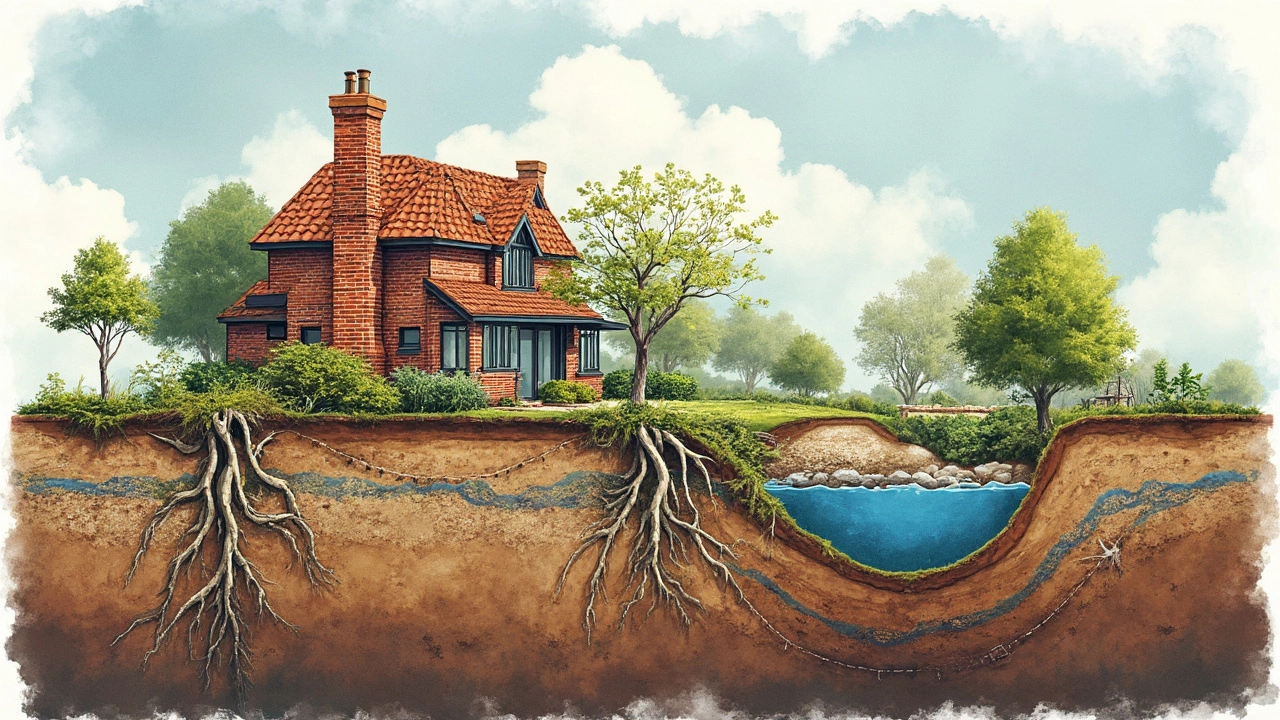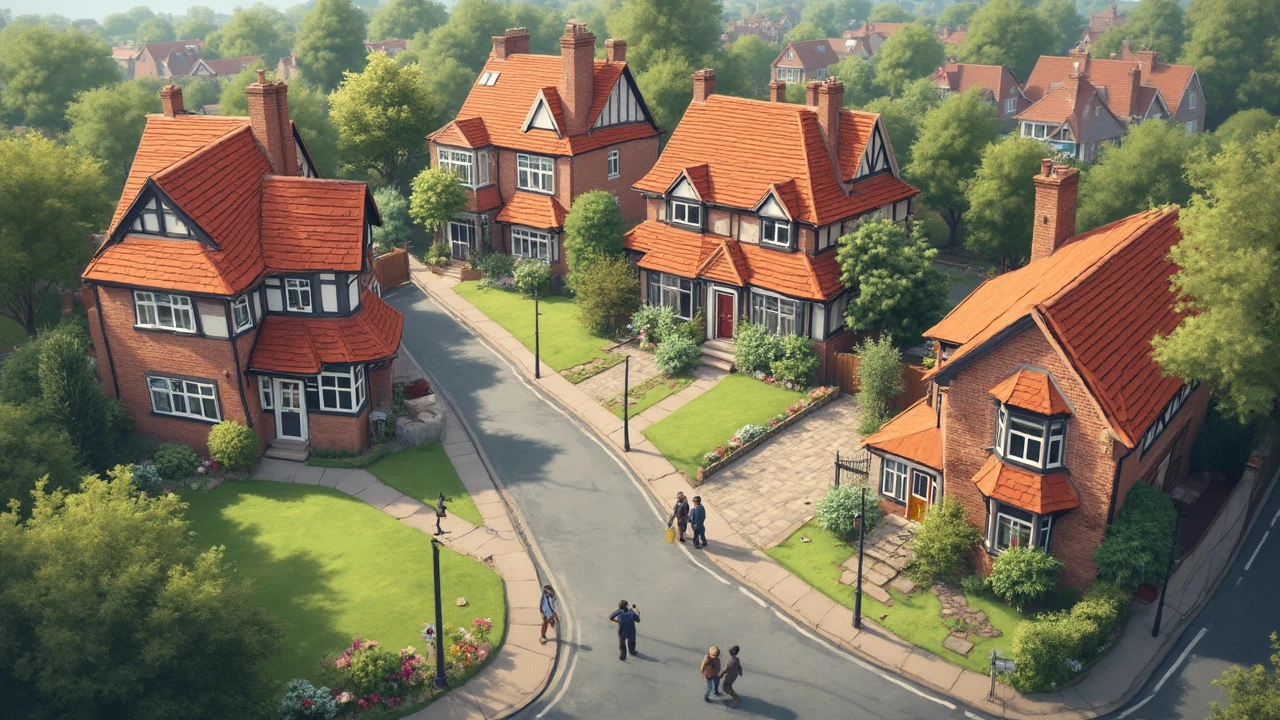Major Foundation Issues: What to Look Out For
 Mar, 27 2025
Mar, 27 2025
When it comes to home repairs, foundation issues are probably one of the scariest. They can really dent your wallet, and if left unchecked, they can lead to more damage to your home. But how do you know if what you're seeing is a major foundation issue or just a minor crack from settling?
First off, not all cracks are equal. Horizontal or jagged cracks are usually more worrisome than vertical ones. If doors or windows start jamming out of nowhere, that's another red flag. But the big daddy of them all? If your floors are uneven or sinking, it's time to call in the cavalry. That's not something you want to tackle with DIY fixes.
Foundation problems often start with poor drainage or soil shifting. If you live in an area with lots of clay, be extra cautious. Clay expands and contracts a lot with moisture, putting pressure on your home. It's kinda like your whole house is playing a slow-motion game of Jenga.
- Signs You're Facing Major Foundation Issues
- Why Foundation Problems Occur
- Risk Factors for Foundation Damage
- Taking Action: What Should You Do?
- Prevention Tips for Homeowners
Signs You're Facing Major Foundation Issues
Alright, let's get straight to it. Spotting major foundation issues early can save you a whole lot of hassle and money. It's like giving your home a health check-up. So, what should you be looking for?
First up, take a walk around your home's exterior. Notice any cracks in the walls? Pay special attention to horizontal or jagged ones as these often signal bigger problems lurking beneath. It's normal for some vertical cracks to appear over time due to natural settling, but if they start to widen, it's worth a closer look.
Next, let's talk doors and windows. Are they sticking or refusing to close properly? While this could just be a seasonal swelling, consistent jamming could be a hint of foundation issues causing frames to warp.
Check your floors too. Walk around and see if there are any noticeable slopes or if you feel like you're on a rollercoaster ride. Uneven or sinking floors are often dead giveaways of a serious problem that can't be ignored.
| Foundation Sign | What it Could Mean |
|---|---|
| Horizontal Cracks | Pressure from water or soil |
| Sticking Doors and Windows | Shifting foundation causing warping |
| Uneven Floors | Possible foundation sinking |
Don't forget to head down to your basement or crawl space. If you see moisture buildup, mold, or even water seepage, it's a red flag. Often, poor drainage leads to these issues, indirectly indicating foundation woes.
Last but definitely not least, if you own a two-story house, look for cracks on the upper floors and misaligned structures. Shifts in the foundation can cause top floors to crack as the overall alignment falters.
If any of these signs ring a bell, it's crucial to reach out to a professional for a proper assessment. Remember, the sooner you catch these signs, the better the outcome for your home and wallet.
Why Foundation Problems Occur
If you've spotted some warning signs, you might be wondering why foundation issues arise in the first place. It's not like houses just decide to throw a tantrum. There are a few usual suspects that can turn your home’s base into a bit of a mess.
The prime culprit behind many foundation repair nightmares is often the soil. Different types of soil react differently to moisture. Clay soil, for instance, swells up like a sponge when wet and shrinks when dry. This constant movement puts a lot of pressure on your home’s foundation, making it shift and crack. Sandier soils don't expand as much, but they can wash away with water, compromising the ground stability beneath the house.
Water management—or rather the lack of it—is another biggie. Poor drainage systems can lead to water pooling around your house. This excess water not only erodes the soil but can also seep into your foundation, causing damage over time. Look at those pesky downspouts and gutters! They play a huge role in directing water away from your property.
Trees are another factor. While they’re great for shade, the roots can extend far beneath your house and draw moisture from the soil, leading to uneven soil drying and foundation shifts. It's like your home's foundation is playing tug of war with a tree.
- Climate: Regions with high rainfall or prolonged dry spells see more foundation issues.
- Poor construction: Sometimes, the foundation wasn't built right from the start. If the ground wasn’t properly compacted before building, you might face issues down the line.
- Earthquakes: In quake-prone areas, even minor tremors can aggravate small cracks or shifts.
Understanding these causes can help you plan and invest in preventative measures, potentially saving you from future headaches. Always keep an eye out for signs of trouble, and when in doubt, call in a foundation repair specialist. They have the expertise to give you a solid plan forward.

Risk Factors for Foundation Damage
Let's talk about what could actually put your foundation at risk. Because knowing these can help you stop problems before they start. Location plays a big role. If your house is built on expansive clay or poorly compacted fill soils, you're more likely to have issues. These types of soil swell and shrink with moisture, causing movement under your home that can mess with your foundation.
Another major player? Water. That's right, too much or too little water can be equally damaging. Poor drainage lets water pool around your foundation, and that can lead to erosion or uneven soil swelling. On the flip side, if the soil around your home dries out too much, it can shrink and cause your foundation to settle unevenly.
Trees are great for shade, but tree roots can grow under your foundation, pulling moisture from the soil and messing with its stability. So you might want to think twice before planting that giant oak right next to the house.
Weather also deserves a mention. Areas with extreme weather changes are more likely to experience the freeze-thaw cycle that really puts stress on home structures. If you’re somewhere with harsh winters, keep an eye on how your home is handling the temperature swings.
And hey, don't forget about human-made risks. Construction activity nearby can shake things up. Vibrations or even minor earthquakes stir up the soil, and that can be a trigger for foundation cracks.
Foundation repair shouldn't be a guessing game. By keeping an eye out for these risk factors, you can take proactive steps to protect your home from major foundation issues. And sometimes, the simplest fix is just making sure water drains away from your house effectively. Install those gutters properly, and keep them clean. It's cheaper than a major repair down the line, trust me.
| Risk Factor | Impact |
|---|---|
| Expansive Clay | Swelling & shrinking causes shifting |
| Poor Drainage | Water pooling leads to erosion |
| Tree Roots | Can suck moisture from soil |
| Extreme Weather | Freeze-thaw cycles add stress |
Taking Action: What Should You Do?
If you've noticed warning signs of major foundation issues in your home, it's crucial not to panic. Here's a straightforward guide on how to address the problem efficiently.
First, schedule a professional inspection. Foundation experts can assess the extent of the damage and suggest the right course of action. This isn't the time for guesswork.
After a detailed inspection, discuss potential repair options. Common solutions include:
- Piering: This involves lifting and securing the foundation with steel piers. It's a go-to for sinking foundations.
- Slab Jacking: Ideal for uneven floors, this involves injecting a solution under the slab to lift it back in place.
- Waterproofing: To prevent future issues, consider enhancing drainage around your home's perimeter.
Don't forget to address the cause of the issue. Sometimes, it's as simple as fixing your drainage system or grading your yard correctly to divert water away from your home.
If you’re dealing with a minor issue, such as hairline cracks, DIY solutions like filling them with epoxy can sometimes work. But don't ignore them, as they can grow into larger problems.
Here's a little stat for context: According to a 2023 survey, over 60% of foundation repairs stem from poor drainage issues. Ensuring your gutters and downspouts function smoothly can save you a lot of hassle down the road.
Finally, keep an eye out for any new changes. Perform regular home checks, focusing on areas where you previously noticed problems. If anything seems off, it’s better to catch it early.

Prevention Tips for Homeowners
Keeping your home’s foundation in tip-top shape doesn't have to be a monumental task. With a few practical steps, you can prevent major foundation issues from creeping up on you. Here are some solid tips every homeowner should know.
First, ensure your home has proper drainage. Water pooling around your foundation is a recipe for trouble. Keep gutters clean and extend downspouts to direct water away from your home. You might even consider installing a French drain if you're prone to standing water.
Maintain a consistent moisture level around your foundation, especially during hot, dry seasons. Check the soil condition frequently. If it's particularly parched or cracked, give it a good watering, but don't flood it. Consistency is key here.
Trees are lovely, but they can also be a foundation’s enemy if planted too close. Root systems can extend out far and wide in search of water, which sometimes means under your home. Plant trees at least 20 feet from the house to avoid potential upheaval issues.
Regularly inspect your home for any changes. Look out for new cracks in walls, sticking doors, or sloped floors. If anything seems off, don’t ignore it. Early detection is vital and can save you a ton of cash and hassle down the road.
Finally, consider scheduling annual professional inspections. An expert can spot potential issues you might miss and offer tailor-made solutions to safeguard your foundation.
Remember, keeping on top of these foundation repair prevention tips can make all the difference. A stitch in time saves nine, as they say, which totally applies to maintaining the well-being of your home's foundation!
